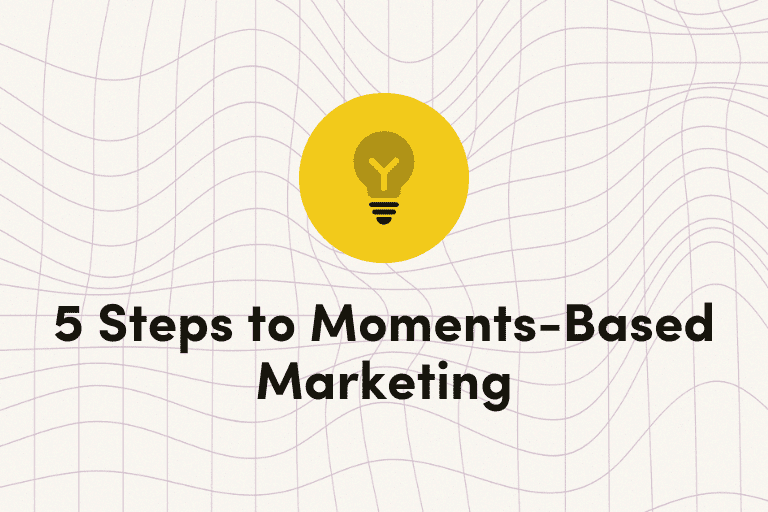There are plenty of new, trendy channels that are grasping for your attention and enticing your customers. And while you may need to reevaluate which marketing tactics convert the most loyal customers, email is not the channel to put on the back burner.
The Iterable omni-channel marketing platform helps you run seamless campaigns across email, direct mail, social, mobile and SMS, but here are 9 stats that show why Email Marketing is such an important part of your marketing strategy.
Reach More Customers
1. High penetration — According to Pew Research, about 92% of Internet users use email.
Of those who don’t, most of them are older than 65. Compare that to only 65% of Americans who use social media and 68% of Americans who use a smartphone. There is a huge opportunity to reach your target customers with email.
2. Broad usage — The number of worldwide email users is approximately 2.6 billion.
That’s more than a third of the world’s population. That same report by The Radicati Group says that there are more than 205 billion emails sent per day. While that means there is plenty of noise, it also means that your competitors might be at the top of your potential customers’ inboxes instead of you. That makes it even more important to not only email your users, but to send the right campaigns.
3. Engagement — 72% of consumers say email is their preferred communication method with brands they do business with.
According to MarketingSherpa, 61% say they like to receive promotional emails weekly and 28% want them even more frequently. You probably have email addresses for customers who have converted in the past. What about users who have visited your site, but not converted? Find ways to invite them to share their email with you so you can begin to build a relationship with them. You might consider starting with a strong welcome series that informs the user and gives them some value.
Control The Message
4. Flexibility — No other channel comes close to the giving you the options email does.
Depending on your business, the type of message and what you are aiming for (e.g., opens, clicks, conversions, brand awareness), you can optimize your emails to help you achieve your goals.
Plain text emails have a 25% higher open rate than HTML emails, according to a Hubspot report. Does that mean all emails should be plain text? While plain text may be the right option for some types of emails, brands may want a rich showcase for their products (and their users may be signing up for that), so HTML may be the better choice. In the end, it’s best to test to see what works for your audience.
Compared to email, SMS and push notifications are very restrictive in what you can do in terms of length and design. While they have their place, their flexibility pales in comparison to email.
5. Mobile-friendly — The latest stats from Litmus say that at least 53% of email is read on a mobile device.
While you may think of email as only one channel, it’s the chameleon of your marketing stack. Remember that email can — and should — be responsive for desktop, mobile and even tablets to provide the best experience for your users. It’s this type of flexibility that lets you control your message better than any other channel.
6. Personalization — Customized emails have approximately 29% higher open rates and 41% higher click rates, according to Experian.
Similarly, a report from Adestra says that emails with personalized subject lines have a 22% higher open rate. More and more, users expect you to customize each touchpoint for them. No one wants a message full of products or services that aren’t relevant to them. Email marketing tools like Iterable allow you to customize each aspect of the message for each of your users.
Measure, Test and Apply What You Learn
7. ROI — For every dollar spent, the Direct Marketing Association says marketers earn about $45 back in revenue.
Email marketing can be a very high ROI investment. And while there are many metrics you could measure for each campaign you send, be sure you are measuring the ones that will prove your campaigns are worth your time.
8. Timing — On average, emails sent on Monday earn the highest number of transactions, according to Experian.
Even if you had the most perfectly personalized message for each user, you still may miss the opportunity to convert them if you deliver the message at the wrong time. Perhaps your audience prefers Fridays instead of Mondays. Test whether early morning, mid-day or late evening works best.
9. Content — Econsultancy recently reported that 38% of companies are regularly testing to increase conversions.
Because email tools are becoming more and more sophisticated, A/B testing each content element from subject line, and pre-header text to images and calls-to-action is the norm. Emails with coupons average 48% more earned revenue than ones without in the short term (eMarketer), but you may learn that emails with personalized content engage long-term loyal customers. Tweak your content strategy for your overall business objectives.
Looking for User Engagement Best Practices?
We’re highlighting tips and tricks for each message channel (email, direct, mobile push notifications, social and SMS), stage of the customer buying journey and message types (blast, triggered and transactional) in our latest blog series.































